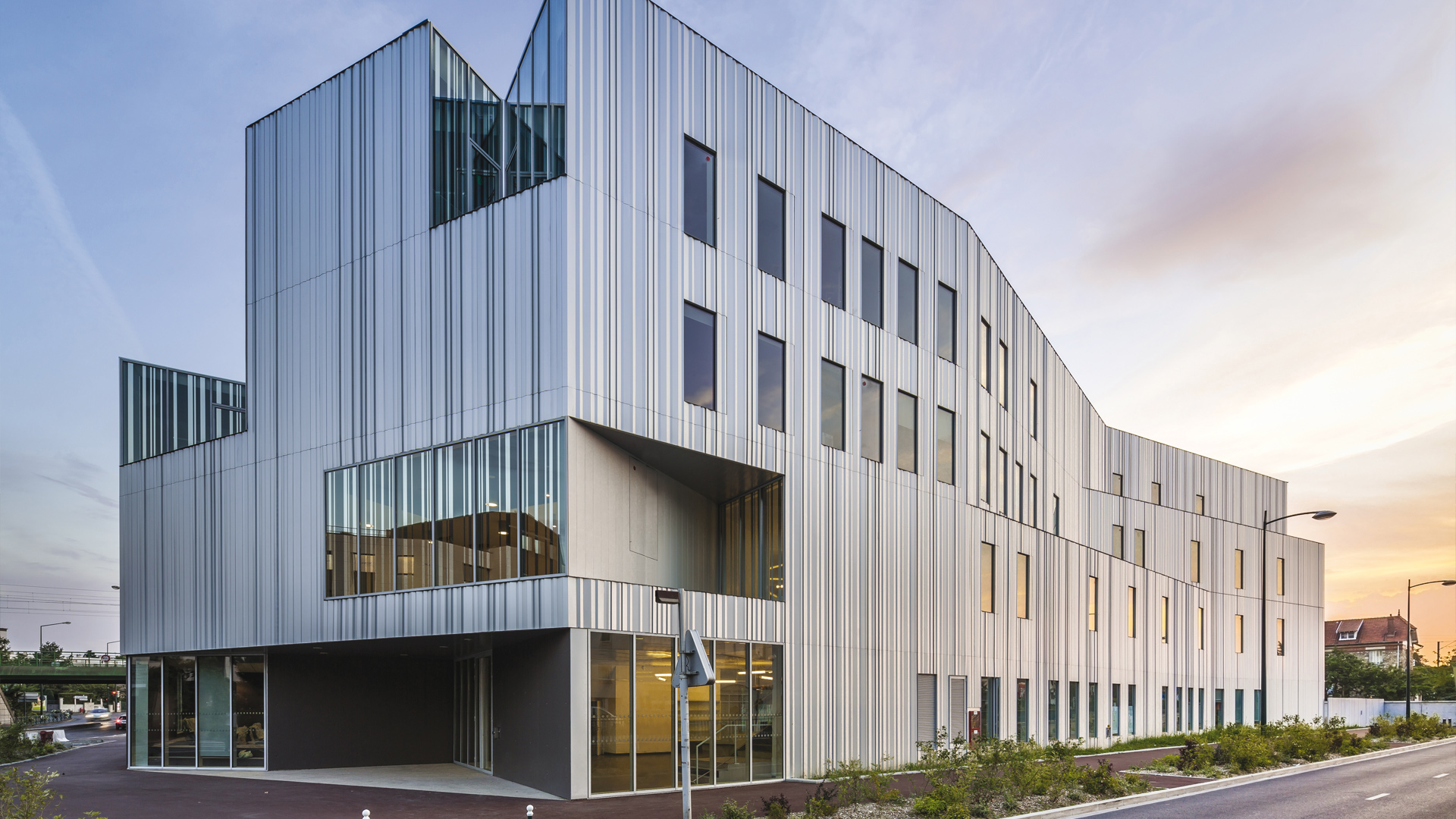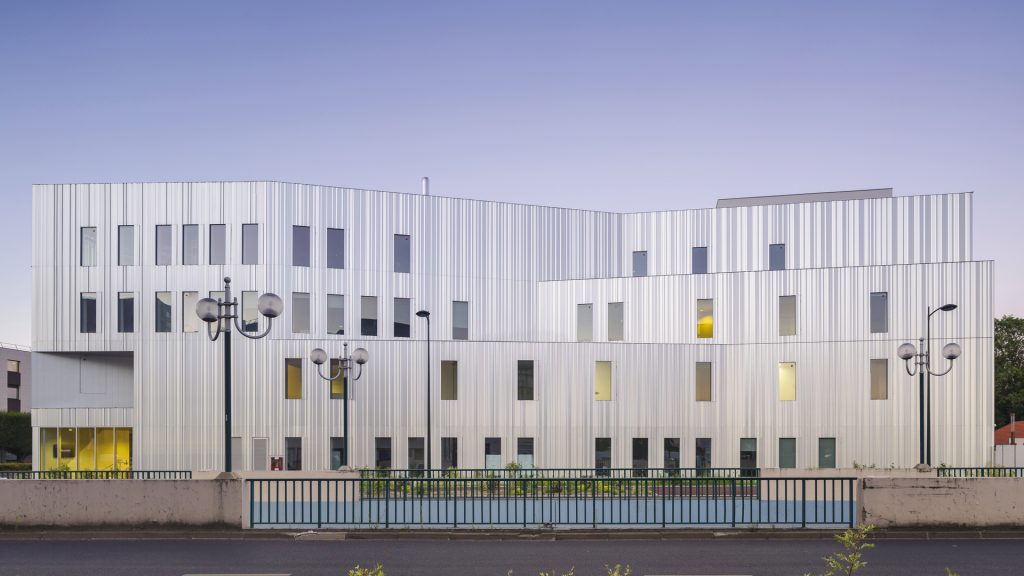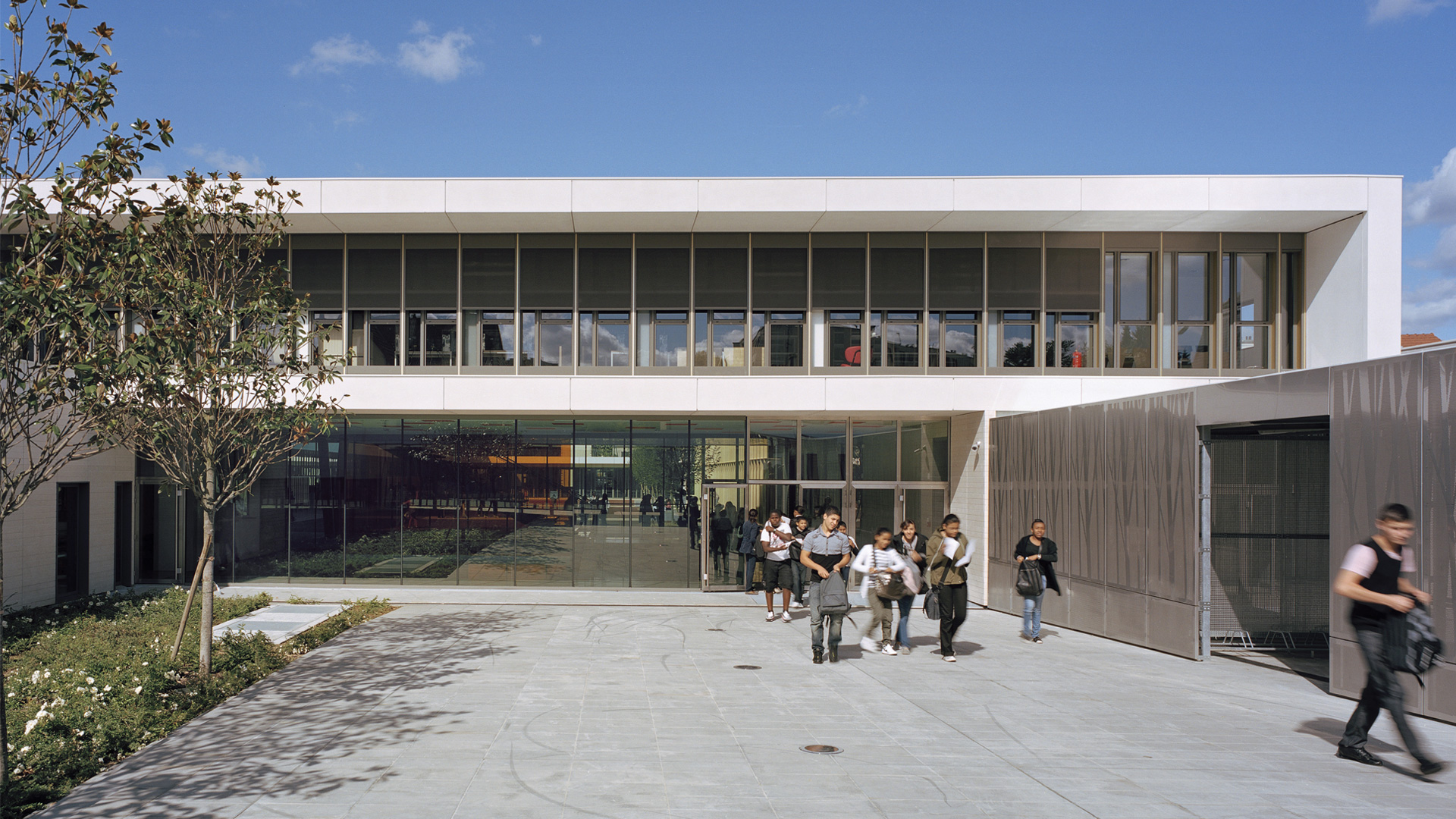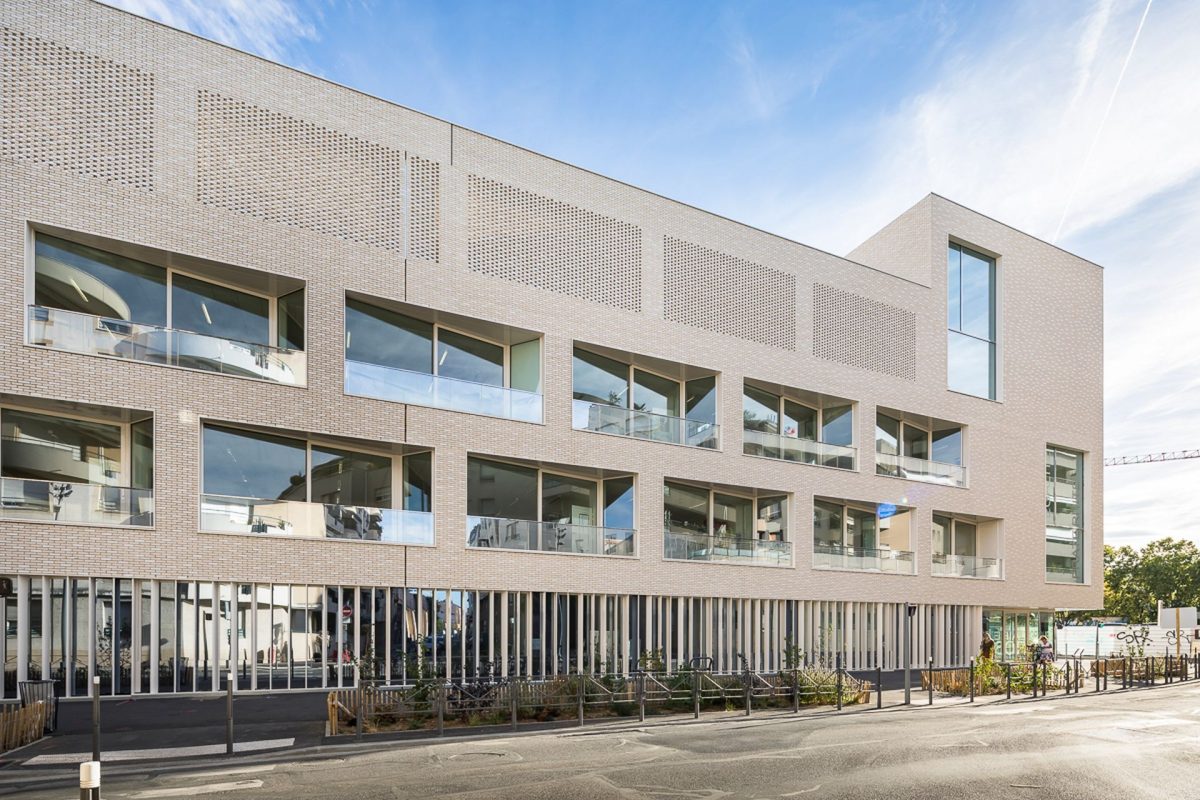Beyond a simple functional solution, the architecture also plays an important symbolic role by enhancing the value of the building’s contents, its program and the people working there.
Bordered on one side by a railway embankment and on the other the Place de l’Insurrection, the Institut des Arts Culinaires et de l’Hôtellerie (INHAC, National Institute of the Culinary Arts and Hospitality) is a symbolic marker at the entrance to the town of Saint-Gratien.
The project is almost circular in shape, winding around a patio opening onto the schoolyard on the first floor.
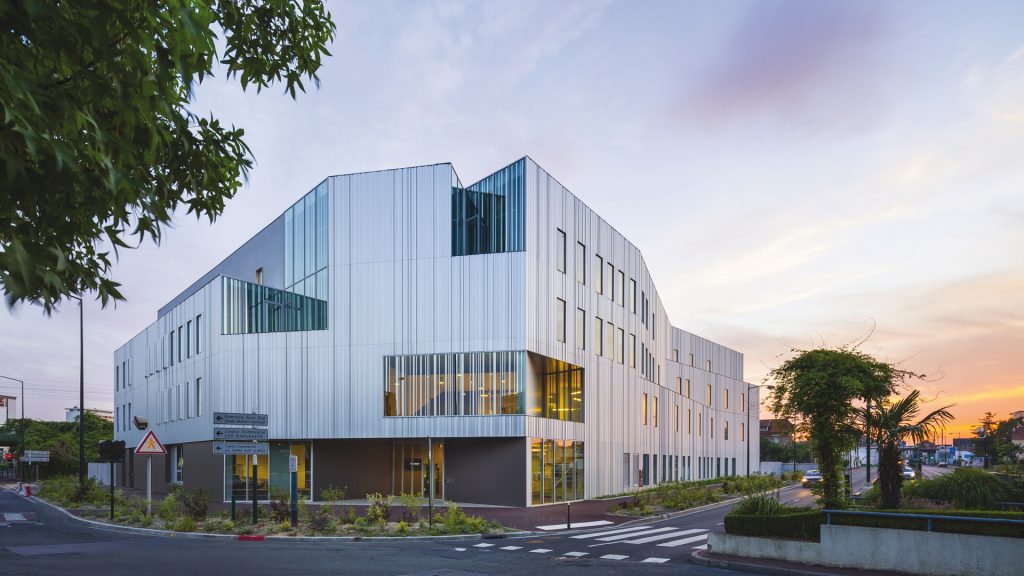
This open area sees most of the foot traffic and gives access to all the classrooms. On the Place de l’Insurrection the building is chamfered with a cut side where a series of attractive window fronts appear. Their scale seems to indicate the presence of specific rooms, i.e. kitchens, the restaurant, the lecture hall. The composition is finished by other bay windows, hollows, protuberances and edges. The side volumes are broken up by sometimes aligned, sometimes off-set strips; it is clad in stainless steel with vertical folds that play with the light and its reflections.
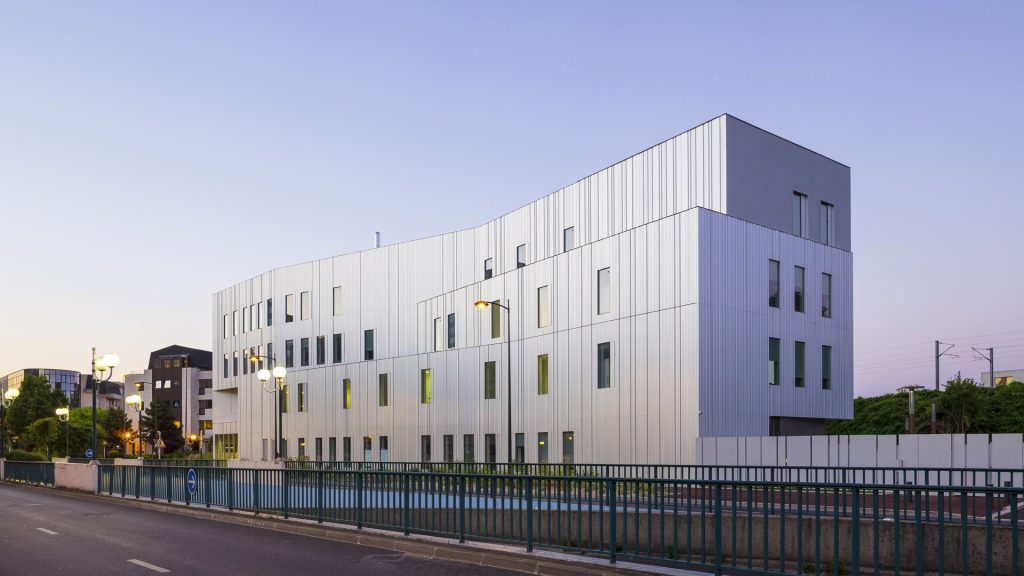
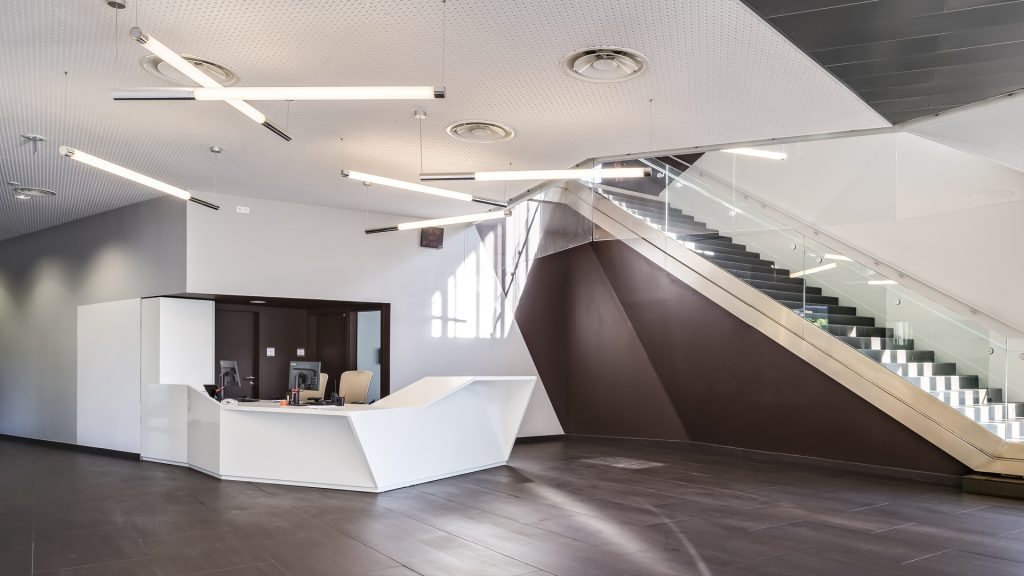
The building is made very sensitive and very reactive to the light variations because of its multiple facets, its edges and its overlapping metal clapboards, going from reds to blues depending on the time of day and the season. The windows with hidden handles and bare on the outside, as if cut with a box cutter, are flush to the wall, which reinforces the effect of purity and a dematerialization of the walls’ thickness.
Vocational education deserves such added value. The plastic research done for the INHAC contributes to it.

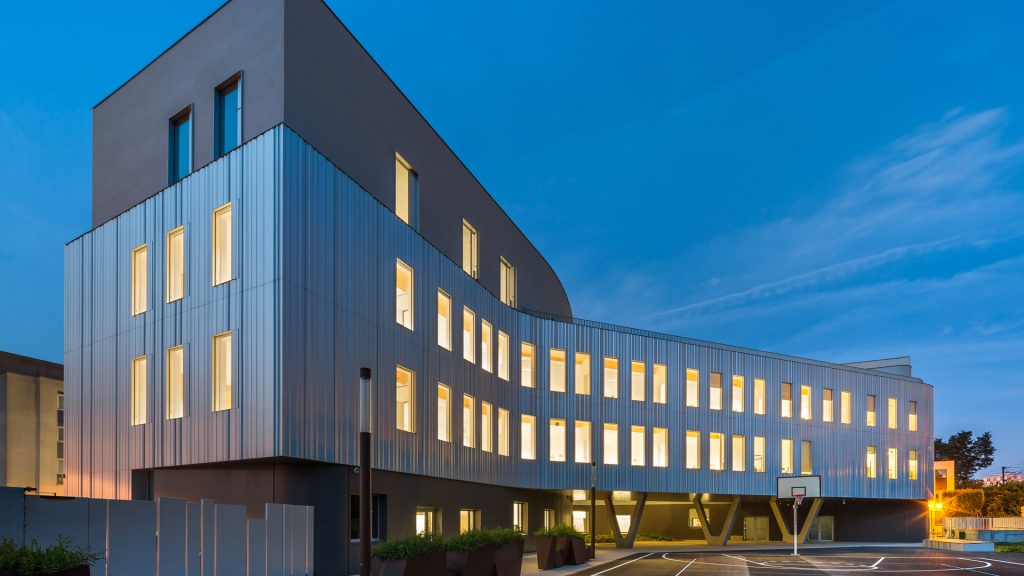
Photographie : Sergio Grazia
